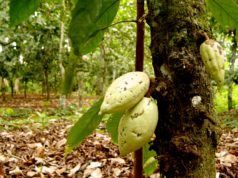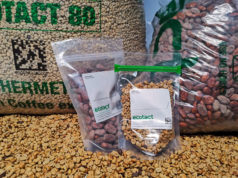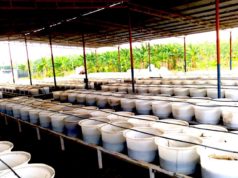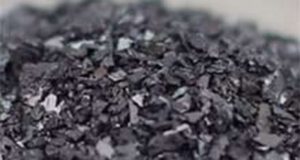By Juan Pablo Crespo
Photos: Liliana Elías
As one takes care of a rose to be given to the right hands in an immaculate way, cocoa should be treated along the path that leads it to its final destination, and when it comes to Venezuelan cocoa, the best fine aroma cocoa in the world, this dedication requires a special profile in order to preserve its unique qualities.
The tropical tree Theobroma cocoa is frequently attacked by various diseases, such as fungi (thrush) or witch’s broom (escoba de bruja) and also plagues affecting the trunk, leaves and fruits, depending on the climatic conditions of the area, the crop handling, the microclimate in the cacao plantation or life cycle of insects.
Both, diseases and plagues are, according to national and international experts, weighty factors for the decrease of cocoa production. Therefore, the key is always to keep the guard up and the teamwork.
An inadequate post harvesting can also make a difference between an appetizing and one unappetizing cocoa for internal or external markets. Post harvesting involves a series of phases sensitive to cocoa pollution, especially in the fermentation and drying stages.
The seed could be infected by germs such as fungi or bacteria, as well as pesticides, herbicides or heavy metals. To maintain innocuousness during production, storage and distribution is a task that requires an unwavering commitment to excellence.
It does not mean to eliminate risks altogether because they are always present in agriculture. Nevertheless, Venezuela must take control of good agricultural practices to minimize risks and increase efficiency and productivity.
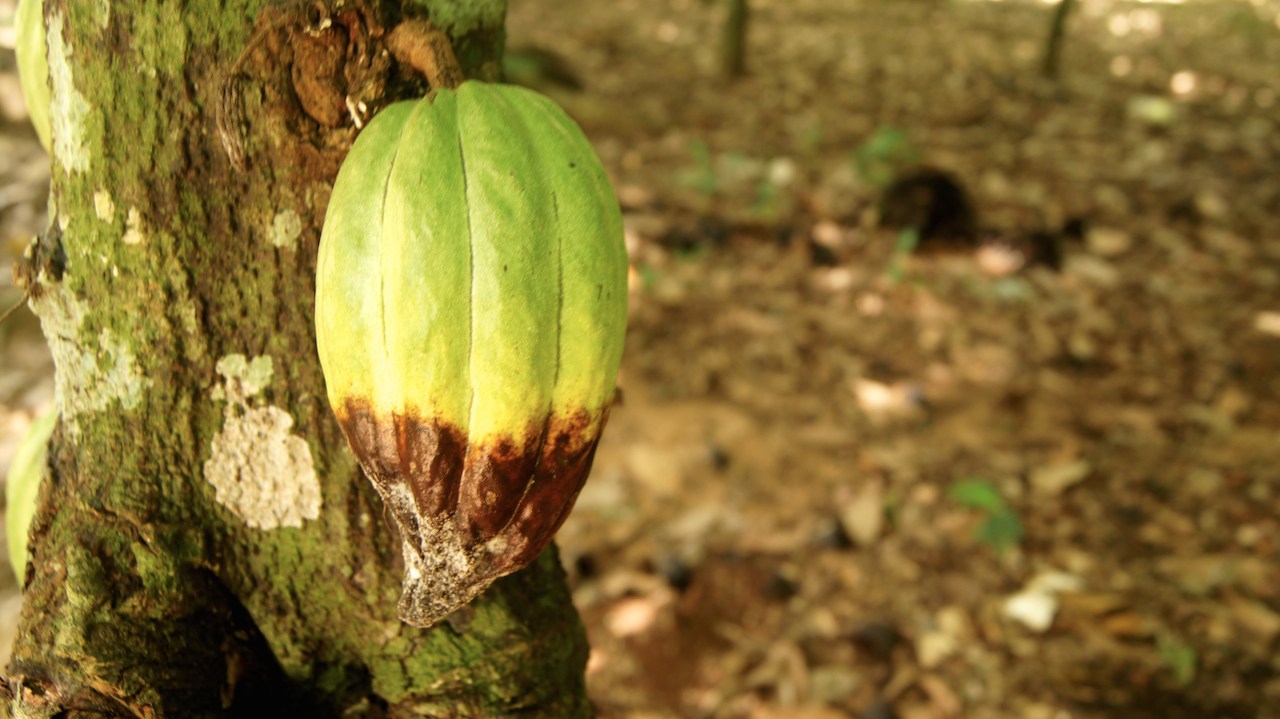
A global headache
“Diseases are the major biotic factor affecting cocoa worldwide, which combined with climate change effects threaten the existing plantations, especially those similar made up of sensible materials. In poorly handled plantations when the environmental conditions are favourable for diseases such as fungi (thrush) or witch’s broom, the losses often exceed 60% of their production” explains Wilbert Phillips-Mora, head of Cocoa Improvement Programme of Tropical Agricultural Research and Higher Education Centre (CATIE) based in Costa Rica. “Due to these causes damages have increased in Latin America, what demands to double efforts in the development and use of tolerant varieties such as those developed by CATIE. Likewise, it requires agricultural handling practices as well as more systematic and efficient plantation management” adds the plant pathologist and cocoa lover.
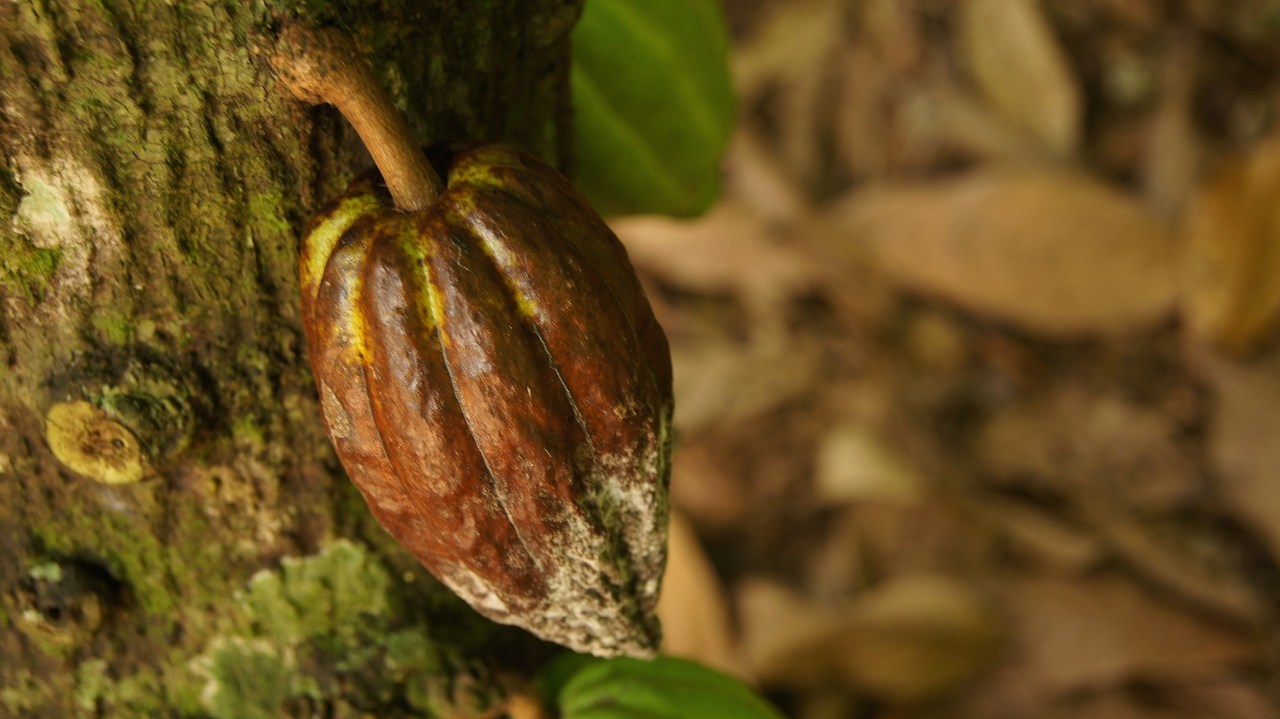
In Venezuela
The theme of cocoa diseases is as extensive as complex, and in Venezuela there are some particularities among its different production regions. However, Ramon Vidal, an agronomist from the National Institute for Agricultural Research (INIA) tells us that in the states with largest production areas as Sucre (East) and Miranda (centre) the most common diseases are: witch’s broom caused by the fungus Moniliophthora pernicious, brown rot of the pod and log cancer caused by the fungus Phytophthora palmivora and other species of Phytophthora. “They cause deformities in branches, damages to the stem and death of the plant, in some cases.”
The control measures are geared towards the use of resistant varieties, cultural practices, usage of biocontrol agents and, in some cases applications of fungicide, as described Vidal.
Regarding the witch’s broom, the biochemist Jaime Flores, representative in Venezuela of the Inter-American Institute for Cooperation on Agriculture (IICA), also recommends that good cultural practices are implemented at field level, including cleaning of the farm. “Such diseases and especially the witch’s broom are closely related to the use of common sense. Waste disposal places are niches for the development of plagues or diseases, thus, the focal point of pollution “.
There are also other diseases in other Venezuelan states, such as: cocoa thrush, black spot, retrogressive death, water stain and guts, among others.
Plagues deserve a separate chapter which we will analyse in another instalment. However, Vidal anticipates that the most important are “trunk drillers (bark beetles) and several species of fruit borers, but their field of influence varies according to production areas”.
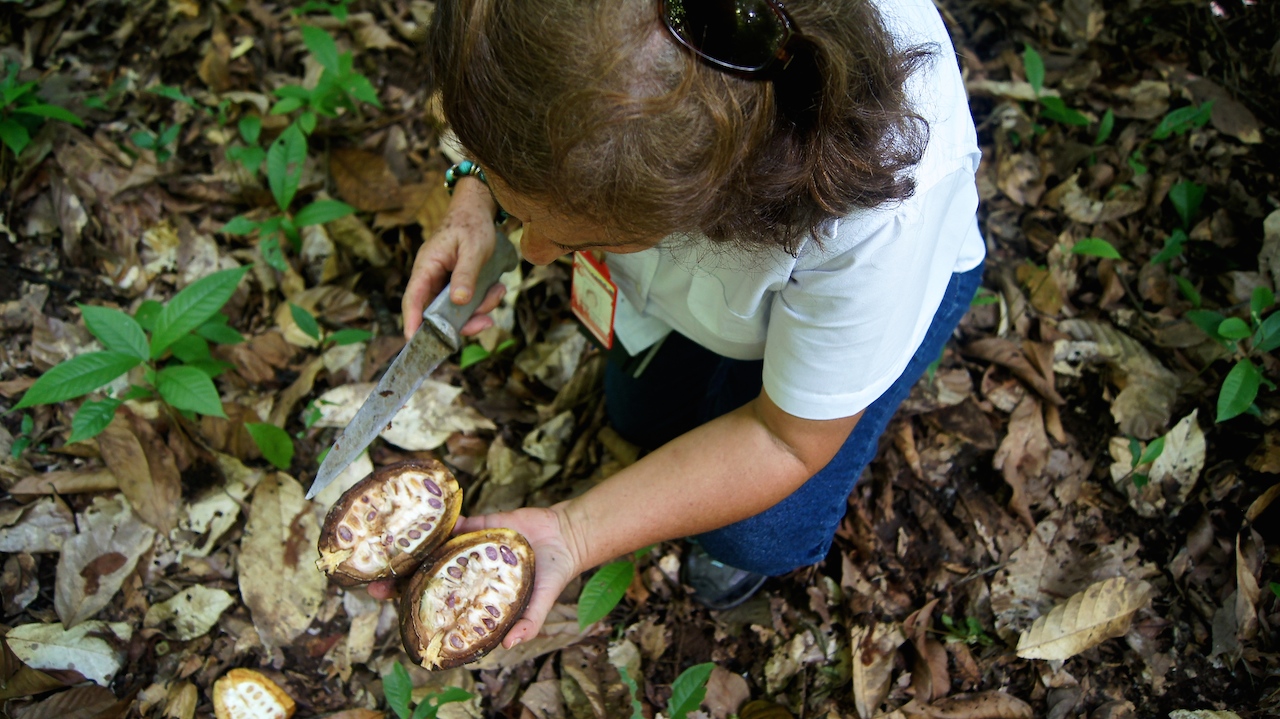
Thrush, a key problem
The Crop Life Latin America says that thrush in Venezuela is widespread in the western part of the country, causing over 50% of crop losses in plantations using low technology. The Crop Life Latin America is an international trade association which represents the crop science industry and works for a sustainable and productive agriculture within the agricultural best practices.
From Central Station Chama Inia-Zulia, Raisa Rumbos explains that she agrees with the data of CropLife about the impact of thrush in western Venezuela and adds that the fungus (Moniliophthora roreri) “produces a range of losses in the area from 50% to 80%, and up to 100% in the worst-case-scenario “.
Thrush attacks hybrids cocoas tending to be foresteros with more forestero blood as well as foresteros as such.
Judging by her experience in the field Rumbos indicates that this fungus does not attack porcelain cocoa (typical from South Lake of Maracaibo) because it has developed resistance to thrush, as the San Juan 1 and San Juan 3. “This resistance is also found in cocoa Guasare “.
The PI7 researcher and plant pathologist explains that it is essential to recognise the five main symptoms of thrush: “Hump (bumps), yellowish brown spot, oily spots, chocolate stain and shrivelled fruits full of spores” (fungus spores that can infect other fruits or healthy plantations).
From the South of Lake Maracaibo, the also agronomist Iraima Chacon, coordinator of the Socialist Research Centre and Cocoa Development (CESID-Cacao), attached to Corpozulia, said that after the disease becomes endemic in a plantation “it cannot be eliminated, but it is possible to control its impact”
She points out that from CESID-Cacao are constantly training producers to be able to recognise the symptoms of the disease which she described as very invasive.
Zulia, Merida, Trujillo, Tachira, Barinas and Apure are the states most affected by thrush, which can attack both in summer or winter, but it is more frequent at the beginning of rainy seasons.
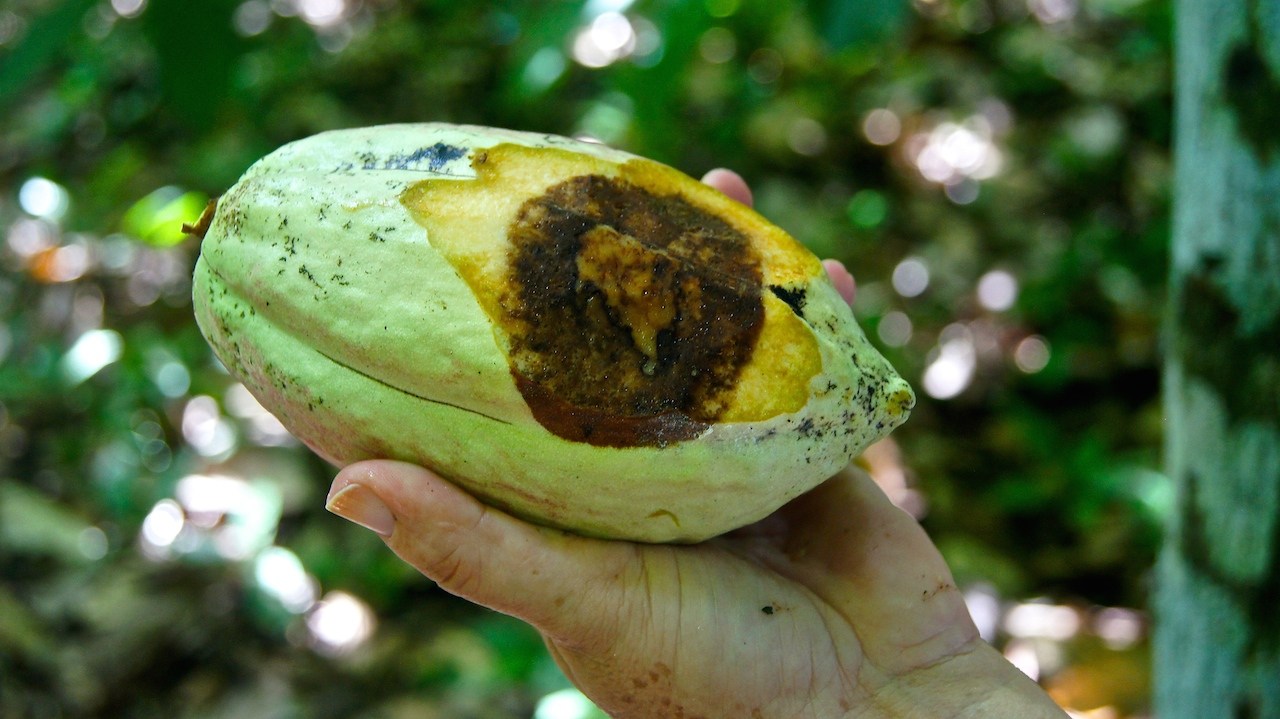
Attention, please!
Jaime Flores also warns us that IICA studies have been able to determine that prevalent cocoa diseases in the South of Lake as thrush can be spread to central and eastern Venezuela, as Barlovento (Miranda) and Sucre state due to lack of controls and an inadequate transport of genetic material.
At this point, Chacon indicates that thrush “has also been reported in the Amazon state” in the south of Venezuela.
Other diseases with some presence in the western part are anthracnose (Colletotrichum gloeosporioides), sudden death (Lasiodiplodia theobromae), water stain (Phytophthora megasperma), brown rot or trunk, branches or roots cancers (Phytophthora palmivora ) as well as witch’s broom and cocoa guts.
No guidelines?
Cocoa quality is also closely related to the post-harvesting, a stage when those unique tastes and smells burst to captivate the world. However, beyond those diseases, plagues or contamination to which the seed might be exposed, there must be a change of direction in the country to take a step forward on good agricultural practices. Otherwise, to overcome the productive stagnation will be a hard work.
“Although we have the best cocoas in the world, poor post-harvest handling could affect not only their organoleptic features but also their innocuousness,” said Flores, who has a Master’s degree in Quality Management.
“It is necessary to raise awareness to the producer regarding the existence of practices far from traditional ones, with an agro-ecological vision. Then, it is necessary to reach the diffusion, education and monitoring processes. It’s not enough to train the producer, there must be extension and support programmes. Apart from knowing what measures to implement in order to control a plague or disease, it is necessary to have health policies and programmes for prevention, control and eradication, if the latter could be possible”.
Other studies carried out by IICA in Venezuela have concluded that a poor post-harvest handling could cause cocoa pollution, such as ochratoxin A, produced by a micotoxigenic fungus and other less known contamination with salmonella. “There are empirical processes as those in which the seed is dried in yards, which, depending on the way they are carried out, innocuousness might be affected by mycotoxin or by salmonella” said Jaime Flores.

Good examples
In contrast to the lack of guidelines on good agricultural practices in the country, there are some good examples. To mention just one, producers are aware of the importance of providing quality food adapted to innocuousness processes, because of that they deploy plans for promotion and agricultural development with their suppliers. “Nestle has a programme called Cocoa Plan, which apart from promoting nurseries with varieties of fine aroma cocoa, also they give assistance in agricultural best practices,” said Flores, an Ecuadorian with 12 years in Venezuela.
Likewise, there exists a reference manual on modern technology farming in our country, named “El cacao en Venezuela” (Cocoa in Venezuela) by the researchers and promoters of cocoa cultivation Humberto Reyes & Lilian Capriles, whose bibliography is a national reference for anyone interested in the subject.
From the soil or post-harvest good agricultural practices are essential to strengthen the quality of our cocoas, threatened by a long list of diseases and plagues risking production constantly, with subsequent socio-economic implications.
The best cocoa in the world, the Venezuelan one, deserves and requires a comprehensive care that can only be maintained with a united and long-term team-work.
